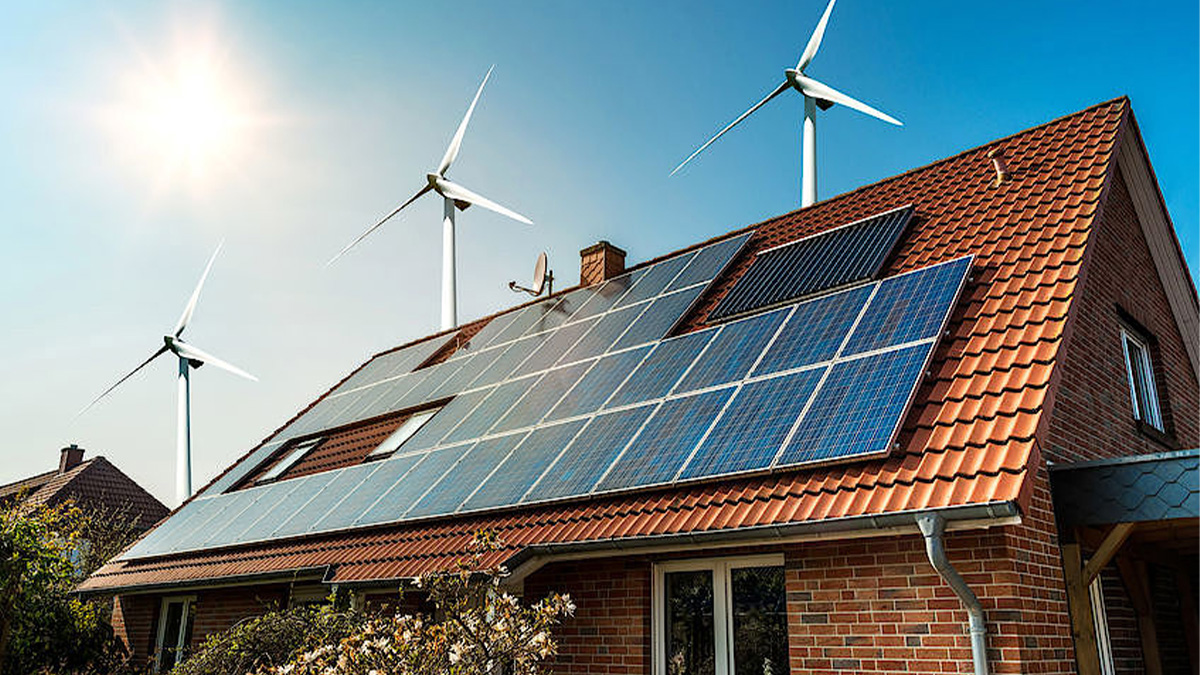Solar panels combined with Energy Storage Systems (ESS) not only harness the sun’s power but also ensure that energy is stored for future use, making it reliable and consistent. Solar panels with ESS play a critical role in providing energy resilience, reducing emissions, decreasing reliance on fossil fuels, and creating a sustainable future for both residential and commercial energy needs.
Historical Development of Solar Panels with ESS
The story of solar energy began in the 1950s with the creation of the first photovoltaic (PV) cells. However, in the early stages, solar energy systems were limited in practicality. Without a storage system, solar energy was only usable during the day and subject to variability due to weather conditions, making it an unreliable power source.
As energy storage technology evolved, ESS became a critical addition to solar power systems. Initially, storage relied on lead-acid batteries, which, while practical, had limited capacity and lifespan. The advent of lithium-ion batteries revolutionized ESS, offering higher efficiency, improved energy density, and longer lifespans, thereby transforming solar energy into a viable, continuous power source. Today, ESS technology, particularly lithium-ion, enables the capture and use of solar energy, even during times when sunlight is not available.
How Solar Panels with ESS Work
Solar panels generate electricity through a process known as the photovoltaic effect, where PV cells convert sunlight into direct current (DC) electricity. An inverter then converts this DC power to alternating current (AC), which powers homes, businesses, and other applications. The addition of ESS, commonly in the form of advanced batteries, allows any surplus energy generated by the panels to be stored.
This stored energy is then available to meet demand when sunlight is scarce or during peak usage hours, reducing the need to draw electricity from the grid. Modern ESS systems, equipped with features like real-time monitoring and AI-driven optimization, make solar energy highly efficient, even in off-grid environments. These systems also allow users to sell excess stored power back to the grid, enhancing cost-effectiveness.
Solar Panel Options
Monocrystalline Solar Panels
Monocrystalline solar panels are made of high-purity silicon. Known for their dark black color and high efficiency, they are one of the most popular choices for photovoltaic systems, thanks to their ability to generate more power in limited spaces. They pair well with ESS due to their high power output and generally offer the highest efficiency among solar technologies. Their efficiency can range generally from about 15% to over 20%. This makes them a preferred choice for applications where space is limited, such as residential rooftops. Their lifespan is also among the longest, often lasting 25 years or more with minimal degradation in performance over time.
Polycrystalline Solar Panels
These panels are recognized for their affordability and solid performance under standard sunlight conditions. Instead of using a single crystal of silicon, they are manufactured from a silicon block that contains many crystals. This is evident in their somewhat speckled appearance and less uniform blue color.
Polycrystalline solar panels are typically less efficient than monocrystalline panels, with efficiency rates generally between about 13% and 16%. The presence of multiple crystals can lead to slightly lower performance because the electrons have a more complex path to follow, increasing the chances of getting blocked or recombining.
Despite their lower efficiency, polycrystalline panels offer a number of advantages. They are less expensive to produce and therefore generally cost less to purchase. This makes them a popular choice for large-scale installations and residential systems where space is not a primary constraint. Additionally, they perform well under high-temperature conditions and have a lifespan comparable to monocrystalline panels, typically around 25 years.
Thin-Film Solar Panels
These panels are significantly different from their monocrystalline and polycrystalline counterparts in materials and manufacturing processes. The manufacturing process involves depositing one or several layers of photovoltaic material onto a substrate, such as glass, plastic, or metal, which differs from the bulkier silicon wafers used in other types of solar panels.
Thin-film panels are less efficient than crystalline silicon panels, typically achieving efficiency rates of 10-13%. However, their production process uses fewer materials and less energy, which can reduce the overall environmental impact. They are also more flexible, lighter, and aesthetically pleasing due to their uniform surface, which makes them ideal for integration into buildings (building-integrated photovoltaics) and for use on surfaces where panel weight is a concern. They offer an attractive option for many applications where traditional panels are impractical such as on curved surfaces or where portability is essential.
ESS Options
Lithium-Ion Batteries
Widely used for their efficiency and longevity, lithium-ion batteries offer high energy density and are suitable for both residential and commercial applications. Lithium-ion remains the most popular due to its reliability and established manufacturing processes.
Flow Batteries
In flow batteries, rechargeability is provided by two chemical components dissolved in liquids within the system and separated by a membrane. Due to their ability to store energy in liquid form and their long lifespan, flow batteries are a scalable and flexible energy storage option. They offer a long cycle life and low maintenance requirements because the electroactive elements do not degrade significantly over time. Because of their scalability, flow batteries are particularly advantageous for large-scale energy storage applications, such as industrial complexes or grid energy storage.
Solid-State Batteries
Solid-state batteries use a solid electrolyte instead of the liquid or gel electrolytes found in conventional lithium-ion batteries, which significantly reduces the risks of leakage and battery fires. This solid electrolyte can be made from ceramic, glass, sulfides, or solid polymers.
Solid-state batteries are typically constructed by stacking layers of the solid electrolyte, cathode, and anode materials. The stacked layers are assembled into a cell configuration and encapsulated in a housing that protects them from environmental factors and mechanical damage. Solid-state batteries promise improved safety, higher energy capacity, and longer lifespans compared to lithium-ion batteries, making them a promising future option for ESS.
Unique Applications and Benefits
Solar panels with ESS provide unparalleled flexibility, serving various sectors:
Residential Use
For homeowners, these systems offer independence from the grid, lower energy bills, and a reliable backup during power outages, reducing the impact of fluctuating energy prices.
Commercial and Industrial Applications
Businesses benefit from stable power and can save on electricity costs, while industries in remote or high-demand areas gain reliability and cost-effectiveness, enabling industries to operate smoothly, even in locations with limited access to traditional power grids.
Special Applications
Solar panels with ESS are invaluable in remote or rural regions and in emergency response scenarios including telecommunications and military installations. They provide a resilient power source for hospitals, schools, and essential services in locations with unreliable grid access.
Global Manufacturing Trends
Asia, particularly China and Taiwan, stands at the forefront in the manufacturing of solar panels and ESS. Taiwan distinguishes itself as a global leader due to its robust semiconductor and electronics expertise, crucial for ESS technology. Supported by a skilled workforce and government initiatives that promote energy sustainability, Taiwan excels in the production of advanced solar panels and ESS.
Taiwan’s Manufacturing Capabilities
The government’s commitment to renewable energy, through incentives and funding, has significantly enhanced Taiwan's production capacity and driven innovation. The nation's well-established electronics and energy systems infrastructure further cements its leading position in ESS and solar technology. Consequently, numerous Taiwanese firms are increasingly investing in R&D to enhance the durability, efficiency, and sustainability of their ESS products.
United Renewable Energy Co., Ltd. (URECO) is a prominent provider in Taiwan, known for its large-scale production and development of solar modules and systems, including industrial ESS containers and lithium-ion UPS systems. They focus on complete renewable energy solutions, enhancing their product offerings with innovations like the first hydrogen fuel cell motorcycle.
TECO, specializing in smart system integration, offers comprehensive solutions for solar energy and ESS. They manage the entire lifecycle of their systems, from design and development to operation and maintenance.
Billion Watts Technologies Co., Ltd, a subsidiary of Billion Electric Group provides solar energy and ESS solutions, with a focus on industrial and commercial applications. Their services include technical engineering, installation, and grid connection, supported by advanced monitoring systems.
Conclusion
Key advancements, including solid-state batteries, along with innovations in AI-driven energy management and predictive algorithms, are expected to optimize the usage patterns of ESS systems, maximizing efficiency. With its strong manufacturing capabilities, Taiwan is well-prepared to meet the growing demand for solar energy solutions, contributing to a cleaner and more sustainable future.




.jpg)









